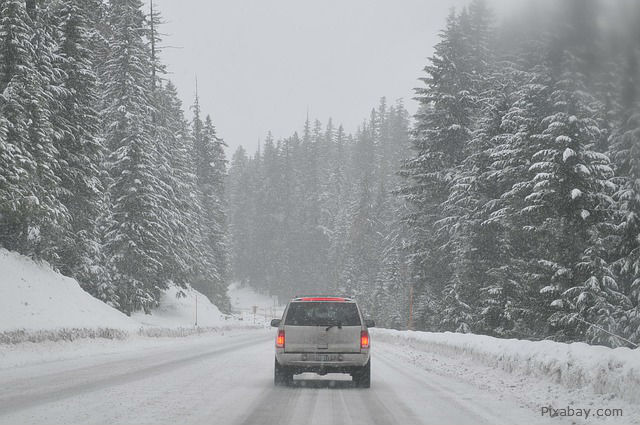If you live in a region that suffers from long, snowy winters, you know braving the treacherous roads is a difficult and dangerous task.

However, you can stay safe behind the wheel by properly preparing your car, having the necessary supplies, and always practicing safe driving tips. Read on to find out the best ways to drive safely this winter.
Prepare your vehicle for winter
- Coolant system. Frigid temperatures can put a strain on your coolant system, and existing problems will only exacerbate as the season progresses. Have your coolant system checked by a mechanic to ensure everything is working properly and replace any malfunctioning or old parts. The coolant in your engine should also be replaced before winter’s onset to avoid problems caused by the cold.
TIP: Instead of putting only antifreeze, use half antifreeze and half water to protect against freezing temperatures and oxidation.
- Tires. Ensuring your tires are in proper condition for icy wintry roads is imperative as you prepare your vehicle for the winter. Check the treads on your tires to make sure you have sufficient traction. Air pressure often decreases faster in cold weather, so be proactive when checking the air in your tires and filling up during the winter. If you live in a particularly cold and snowy region, you may want to invest in snow tires to safely navigate across treacherous roads.
- Fluid levels. Before braving the ice roads, check all of your vehicle’s fluids-- your transmission fluid, brake fluid, power-steering fluid and windshield washing fluid to ensure everything is at the necessary levels.
- Brakes. The last thing you want when driving in slippery conditions is poorly-functioning brakes. The ability to stop swiftly and with as little skid as possible is imperative during snowy winter weather. Check your brakes and rotors (or have it done by a professional) and make any necessary repairs.
- Wipers. Keeping your view clean and clear when snow is falling will improve your visibility and keep you safe on the road. Make sure your wipers are properly functioning and replace old blades if necessary.
Stock up on winter supplies
Keeping the proper tools and supplies in your vehicle when winter begins is necessary for not only safe traveling, but to aid you in case of an emergency. Important items include:
- Snow scraper
- Snow shovel
- Flashlight and batteries
- Blankets
- Flares
- Extra fluids
Safe driving tips
- Make sure you’re clear. Before getting behind the wheel, remember to clear all snow and ice from your front and rear windshields, all windows, mirrors and lights. Don’t forget to knock all the snow off your roof and hood as well to prevent view obstruction while you’re driving—for yourself and other drivers.
- Drive slow. Speeding can cause skidding on slippery roads, and ice will make it difficult for you to stop suddenly if necessary. Always drive more slowly than usual in winter weather.
- Don’t tailgate. If you must stop short on icy, wet roads, you could skid and cause a crash. Following too closely behind another vehicle will increase your risk of accident if the driver stops suddenly. Leave at least two car lengths between you and the car in front of you at all times (the faster you are going, the more room you should leave for stopping).
- Brake carefully. Don’t slam your brakes suddenly or sharply. Brake early when coming to a stop and tap the brakes when slowing down gradually or going around a tight turn.
- Know the weather before you leave. Always check weather forecasts during the winter before planning a long trip. Check current road condition along your route and always make sure it’s safe before climbing behind the wheel.
- Be careful on ramps. Exit ramps are more difficult and dangerous to drive on during winter because they receive less anti-icing material and may be sharp, winding turns. Take exit ramps slowly and carefully.
- Look ahead in traffic. Knowing what’s going on ahead of you will give you more time to react if necessary.
- Be wary of trucks. Trucks are heavier than cars and may take longer to stop. Avoid cutting them off sharply in traffic and leave extra space between you and a truck if you are following one. The same applies to snow plows and maintenance vehicles—you should leave at least 200 feet following distance when driving behind them.
- Wear your seat belt. Not only it is the law, but wearing your seat belt can protect you from injury and even death if you have an accident.